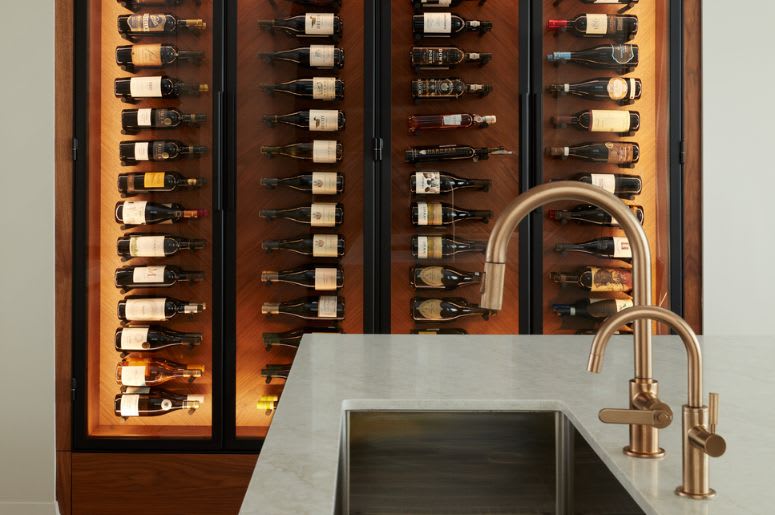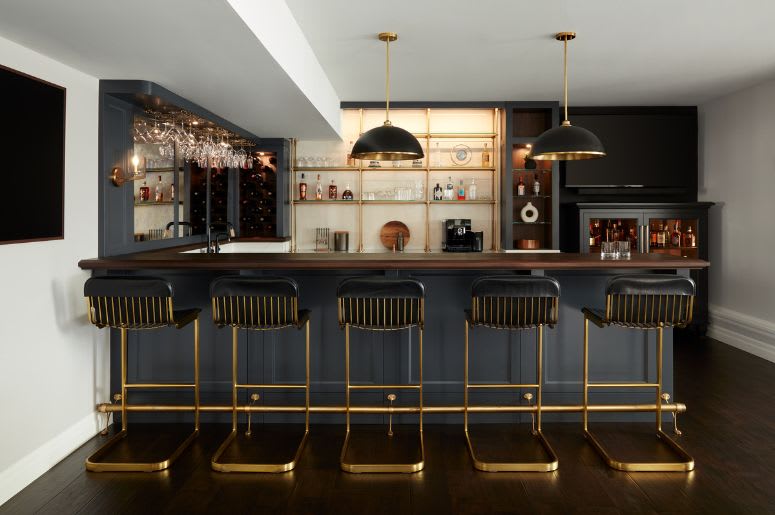We’re excited to feature Catherine, one of our skilled Oakville designers with over two decades of expertise. She’s here to share her top tips for achieving exceptional kitchen lighting. Get ready to brighten your space with her expert advice!
1. Embrace the Impact of Lighting
Lighting is a critical component in any design—whether it’s your kitchen, bathroom, bedroom, or living room. It can dramatically enhance or detract from your space’s aesthetic. Lighting should be integral to your design from the start, not an afterthought. The placement of fixtures, along with the colour and intensity of bulbs, can transform your room’s mood, perceived size, and overall ambiance. Smart bulbs are popular for their customizable settings, but choosing fixtures is crucial for achieving balance and style.


2. Layer Lighting for Maximum Effect
Effective lighting is all about layering, especially in the kitchen. Start with overhead lighting, such as pot lights or ceiling fixtures. Next, incorporate task lighting—under-cabinet lights, island pendants, and reading lamps—to illuminate work areas. Finally, add accent lighting for a polished, luxurious touch. Consider lighting around toe-kicks, crown moulding, or within glass-front cabinets to enhance depth and visual interest. Assess how you’ll use your kitchen to determine the best lighting layers for your design.3. Use Strip Lighting Creatively
LED strip lighting offers versatile options for kitchen illumination. Here are some of my favorite applications:
- Under-Cabinet Lighting: Recessed behind a valance for seamless lighting.
- Countertop Overhangs: Placed under an island overhang to highlight the countertop.
- Display Cabinets: Vertically positioned for subtle, elegant illumination without distracting from featured items.


4. Choose Stylish Fixtures to Reflect Your Personality
Selecting light fixtures is where you can truly express your style. Dramatic chandeliers and ceiling lights can make bold statements, while decorative pendants over the island add charm and character. Though lighting may not always be the focal point, it can serve as a striking accent that enhances the overall design. With innovative designs and materials, lighting can define the style and atmosphere of your room.

Transform Your Kitchen with Brilliant Lighting
Proper lighting is more than just a necessity; it's an opportunity to elevate your kitchen's design and functionality. By embracing layered lighting, creatively using strip lights, and choosing stylish fixtures, you can transform your kitchen into a beautiful and practical space. Don't hesitate to reach out for personalized guidance and innovative solutions tailored to your needs.
Ready to Brighten Your Kitchen?
Transform your space with expert lighting solutions tailored to your needs. Our team is here to help you design a kitchen that shines with style and functionality.
Kitchen Lighting FAQs
- What are the key lighting layers to consider for a kitchen?
The three essential layers are overhead lighting (e.g., pot lights), task lighting (e.g., under-cabinet lights and pendants), and accent lighting (e.g., toe-kick or crown moulding lights).
- How can I use LED strip lighting effectively? LED strip lighting is versatile. It can be used under cabinets, around countertop overhangs, or inside display cabinets to enhance visibility and create ambiance.
- Why is lighting important in kitchen design? Lighting affects the mood, functionality, and perceived size of the space. It’s crucial for highlighting work areas, creating a welcoming atmosphere, and complementing the overall design.
- What types of fixtures can add personality to a kitchen? Consider dramatic chandeliers, stylish ceiling lights, and decorative pendants. These fixtures can serve as focal points and enhance the room’s style.
- How does smart lighting benefit my kitchen design? Smart lighting allows for customizable control over brightness and colour, helping to set different moods and adapt the lighting to various tasks or times of day.
- When should I incorporate lighting into my kitchen design process? Lighting should be considered early in the design process to ensure it complements and enhances the space's overall layout and aesthetic.

